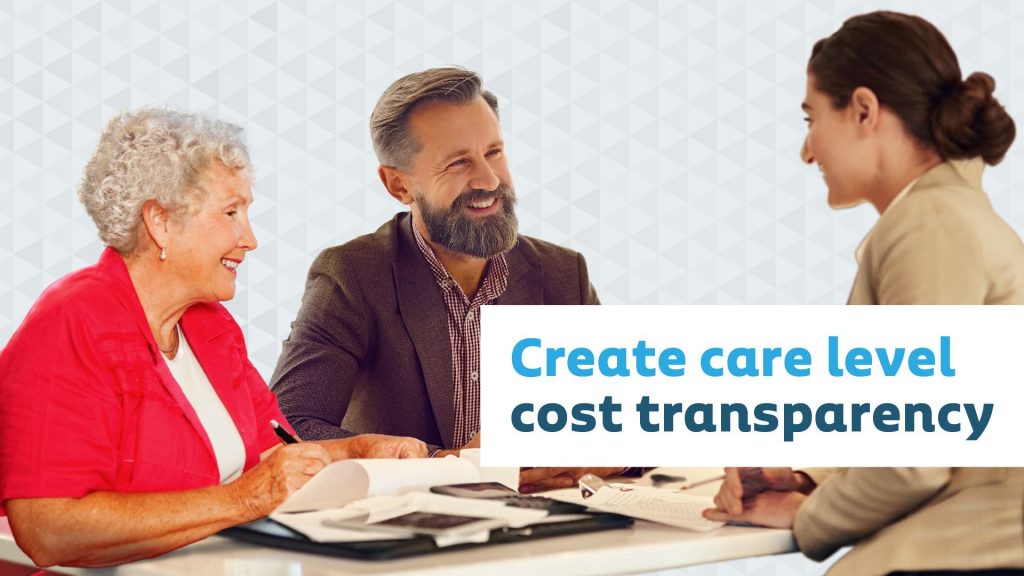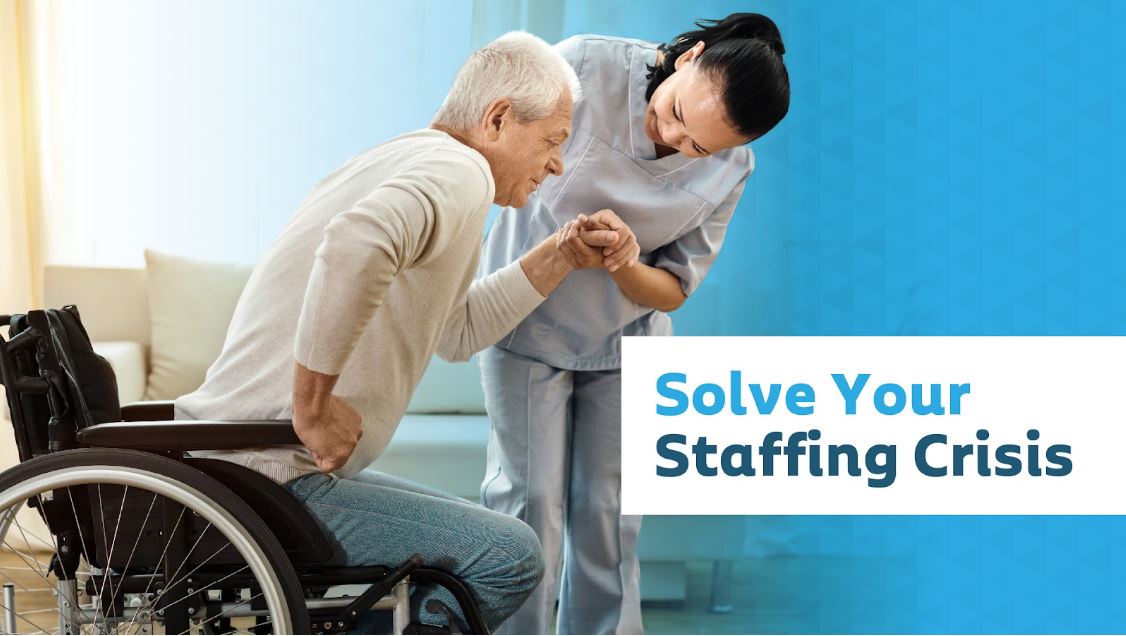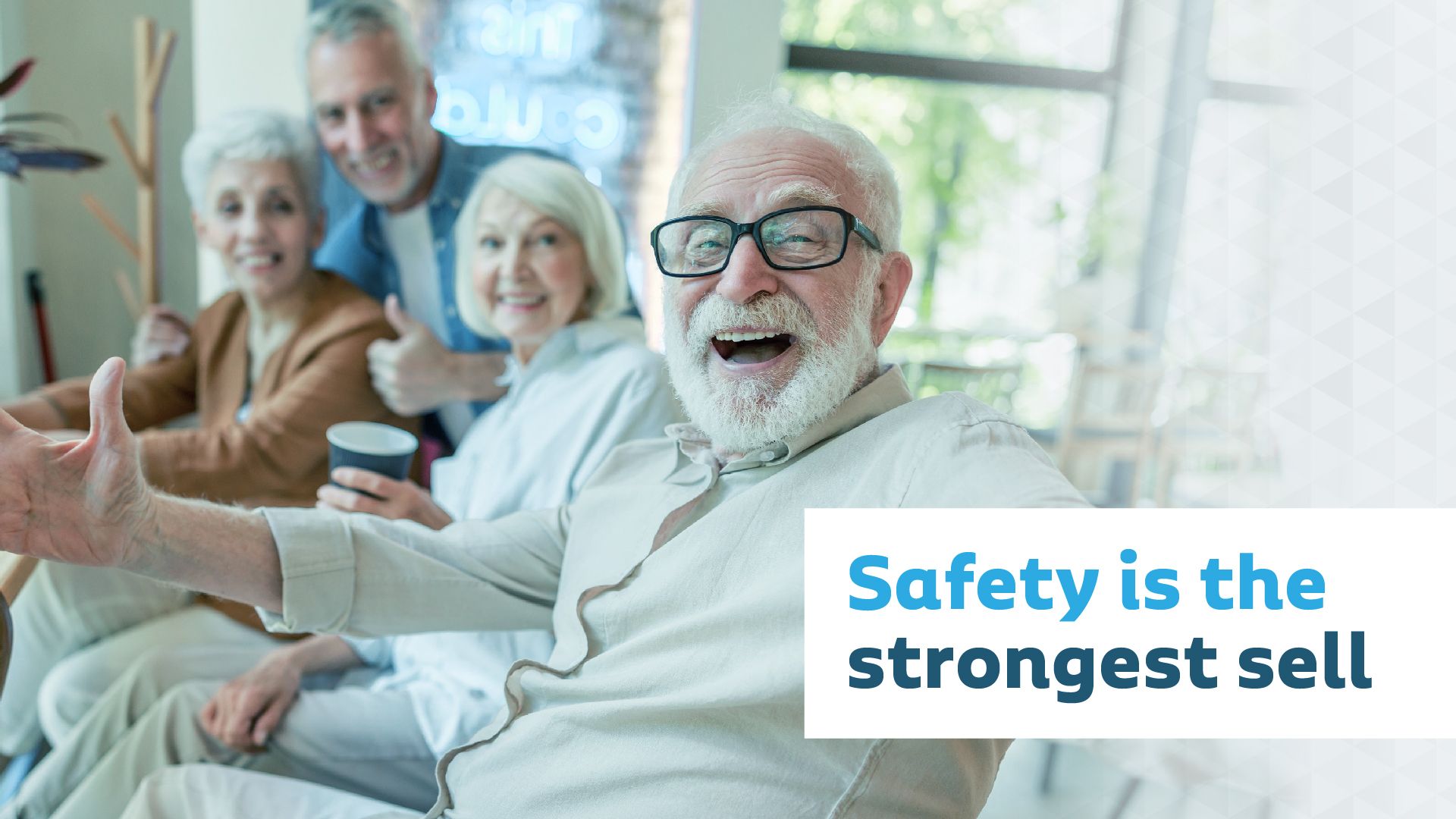Main Menu
Posted by Vayyar
August 5, 2024Levels of care: how senior living operators can address acuity creep and boost revenues

We’re living longer, not healthier. Over 95% of people aged 65 or older suffer from multiple conditions and as senior living residents age, they inevitably need more assistance with ADLs. That’s increasing the burden on caregivers. And it’s also putting huge financial strain on overstretched senior living communities facing the growing issue of “acuity creep.” Operators are struggling to square static monthly rentals with the higher levels of care they’re actually providing.
The dilemma: defining levels of care in assisted living
Defining where an individual might fit, in relation to the various levels on the continuum of care, can be challenging.
There is no universally accepted definition of assisted living levels of care. Some communities charge all-inclusive rates, others offer 3 to 6 levels of care, and some facilities provide as many at 10.
In communities that offer 5 levels of care in assisted living, they are sometimes described as progressing from level one (no assistance) through level two (minimal assistance), all the way up to level five (high-level or full assistance).
Other systems classify independent living as level zero, followed by three levels of assisted living care: minimum assist, stand-by assist, and hands-on assist. The highest level (total assist) is listed under skilled nursing.
What’s more, all providers score levels differently. In the absence of an industry-wide standard, charging fairly and transparently is a tricky business.
How much care are you giving away?
Take “Mary,” an average seventy-year-old resident, on a “bronze” care package. It’s based on her receiving around an hour of caregiver time per day. That formula works fine for the first six months. But multimorbidity is a vicious circle.
As Mary’s rheumatoid arthritis worsens, she starts to find showering and dressing more challenging. Her mobility level falls, meaning she spends more time alone in her apartment. It also contributes to muscle wastage, heightening her risk of falling, and exacerbates her early-stage dementia.
She’s using the nurse call system more often these days, even for help with trivial tasks like finding the TV remote. Caregivers have to check in on her far more frequently. In short, Mary’s level of care is now hovering somewhere between “silver” and “gold.” And the community is picking up the tab for that gap.
Tough conversations
Discussions with residents — and their loved ones — about upgrading to more expensive levels of assisted living care can be fraught. Mary, who resisted making the move to assisted living in the first place, naturally goes on the defensive about her declining health. She’s afraid of losing more of her independence. Her son Tom, who encouraged her to move into the facility, is much more receptive. But he’s wary of committing yet more of Mary’s life savings to her monthly rental.
Creating care cost transparency
As part of its sustainable growth strategy, Mary’s senior living facility has just deployed Vayyar Care. In addition to fully automatic fall detection delivered by cutting-edge radar sensors, management now has a foolproof, totally transparent way to measure Caregiver Time Per Resident.
It tracks the aggregated amount of care each resident receives. It’s anonymized data in terms of which members of staff have attended to which residents. This isn’t about making caregivers feel they’re being constantly monitored.
The Vayyar Care INsights platform uses Bluetooth tags worn by each caregiver to track their locations during each shift. That generates an accurate tally of how much direct care every resident receives.
It enables providers to generate immediate ROI.
And that’s only part of the picture.
Rich behavioral data to support senior living operators
Demonstrating the actual amount of care Mary receives is one thing. Showing Tom and Mary how her co-morbidities are affecting her daily life is another. That’s why the INsights platform also aggregates data from the sensors installed in Mary’s bedroom and bathroom to monitor her behavior. The AI-enabled platform analyzes Mary’s fall risk and raises a red flag if there’s a sudden or significant change in her key metrics.
INsights tracks Mary’s in-room activity to identify her mobility level. It monitors her bathroom usage to highlight signs of a potential UTI or digestive issue. And it reveals how long she’s spending alone in her room. This enables the care team to spot signs of social isolation, which dramatically increases the risk of cognitive decline, heart disease, and stroke.
It’s a whole new level of visibility.
A classic win-win
When Tom and Mary sit down with the facility’s clinical director, they can see the data for themselves. There’s no doubt about the level of care that Mary needs, or the levels of care she’s likely to need in the future. There’s greater trust. And there’s higher confidence in the health outcomes Mary can expect.
The community has been able to streamline the upgrade process, grow revenue, and boost resident satisfaction. What’s more, it’s laid the foundations for a robust system of value-based care. But that’s a topic for another article.
To learn more about how the Vayyar Care INsights platform keeps both residents and operator profits healthy, click here.
The Post URL was successfully copied to your clipboard
Read more on #elderly care

08 October 2024
Recruit, reinforce, and retain should be the mantra of any hiring manager.…
Read more
17 June 2024
Senior living occupancy has recovered from the perfect storm it weathered in…
Read more
12 May 2024
Artificial Intelligence is on the verge of revolutionizing fall prevention in elderly…
Read more


